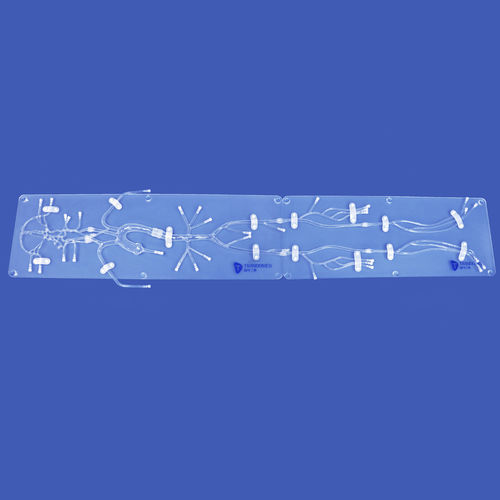
#Industry News
Application and value of vascular models in the development of surgical robots
Model:Full Body Artery I (QS004D)
Vascular models provide an important reference for the design and optimization of interventional surgical robots. The R&D team uses the high-simulation characteristics of the vascular model to restore the inner diameter structure of human blood vessels 1:1, and designs a robotic arm structure, drive mode and control system that is more suitable for the vascular environment. For example, by simulating the narrow space and complex paths in the blood vessels, the flexibility and precision of the robotic arm can be optimized to ensure that the surgical robot can accurately reach the target position in actual surgery. In addition, the vascular model can also be used to test the navigation and positioning capabilities of the surgical robot to further improve the accuracy of the surgery. In the development of interventional surgical robots, experimental verification and performance evaluation are indispensable links. Experiments using vascular models can highly simulate the real surgical environment and evaluate the performance of surgical robots under various conditions.
By simulating the real vascular environment, the vascular model enables the surgical robot to undergo rigorous testing and verification during the development stage. This helps to ensure that the surgical robot can accurately reach the target position in actual surgery, reduce surgical risks, and improve the success rate of surgery. Compared with human and animal experiments, the use of vascular models for research and development can greatly reduce R&D costs. In addition, vascular models can be reused, thereby reducing the consumption and waste of experimental materials. The vascular model provides important support for the technological innovation of interventional surgical robots. By continuously optimizing the design and manufacturing process of the vascular model, the technological innovation of surgical robots in navigation, positioning, perception and control can be promoted, and the performance and reliability of surgical robots can be further improved.
In 2022, Beijing Institute of Technology published a paper titled "An Isomorphic Interactive Device for the Interventional Surgical Robot after In Vivo Study". The vascular model mentioned in the paper, as well as the circulatory system that can reproduce human blood circulation and simulate pressure, flow and temperature, are all Trando 3D products. The R&D personnel used the whole body interventional vascular model as a carrier and carried out remote intervention experiments with surgical instruments to evaluate the operating accuracy of the main controller in the linear and rotational motion of the catheter and guidewire.





